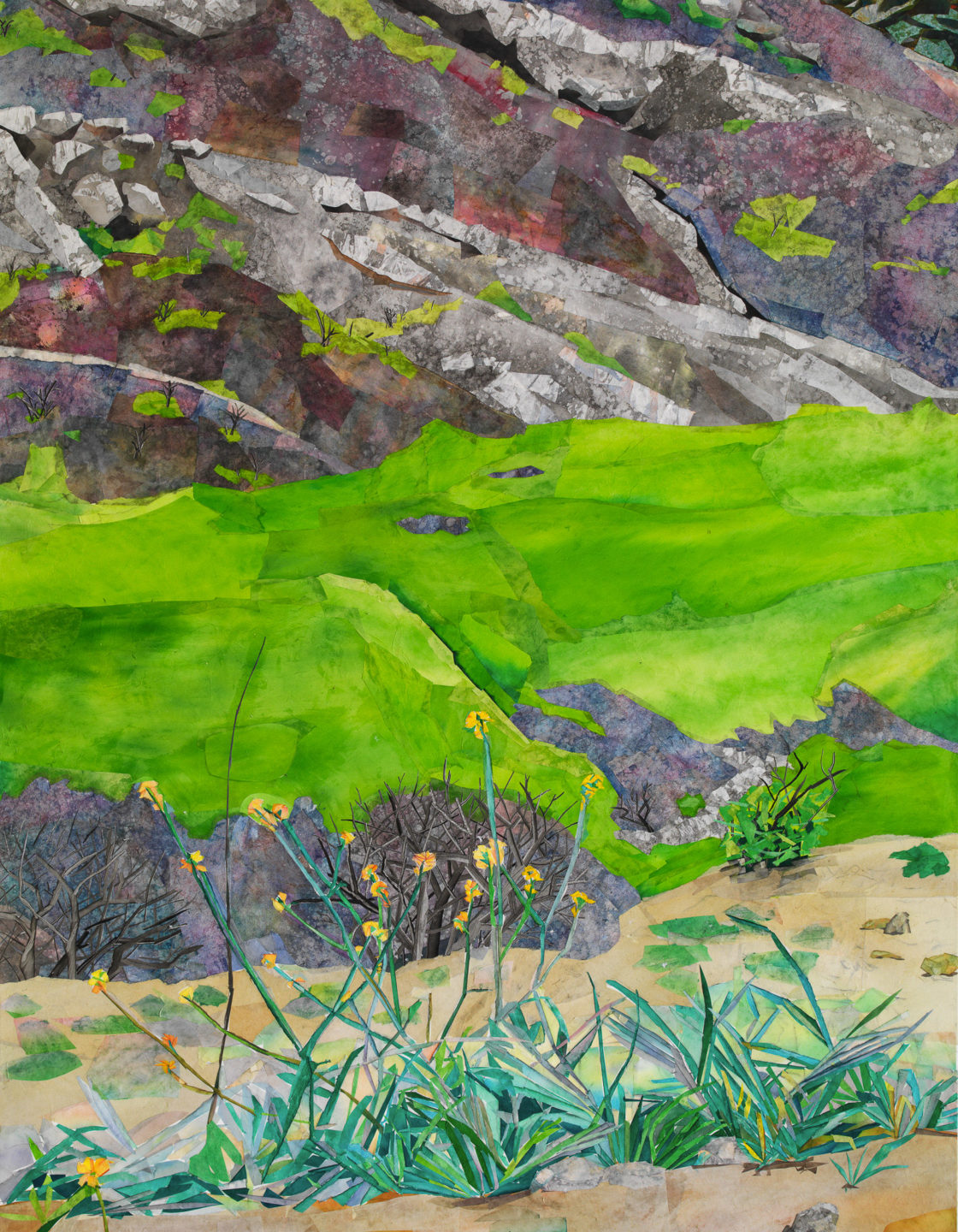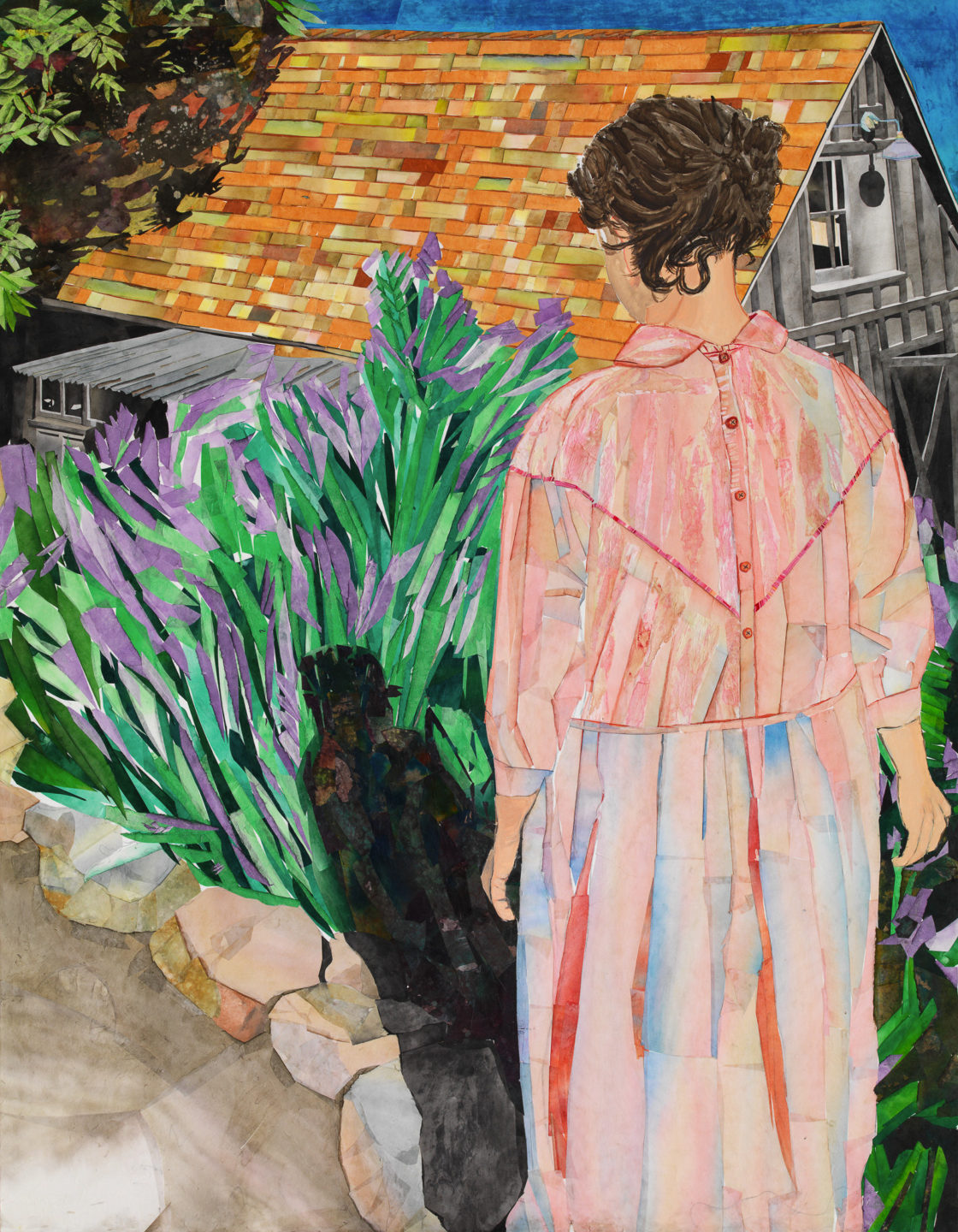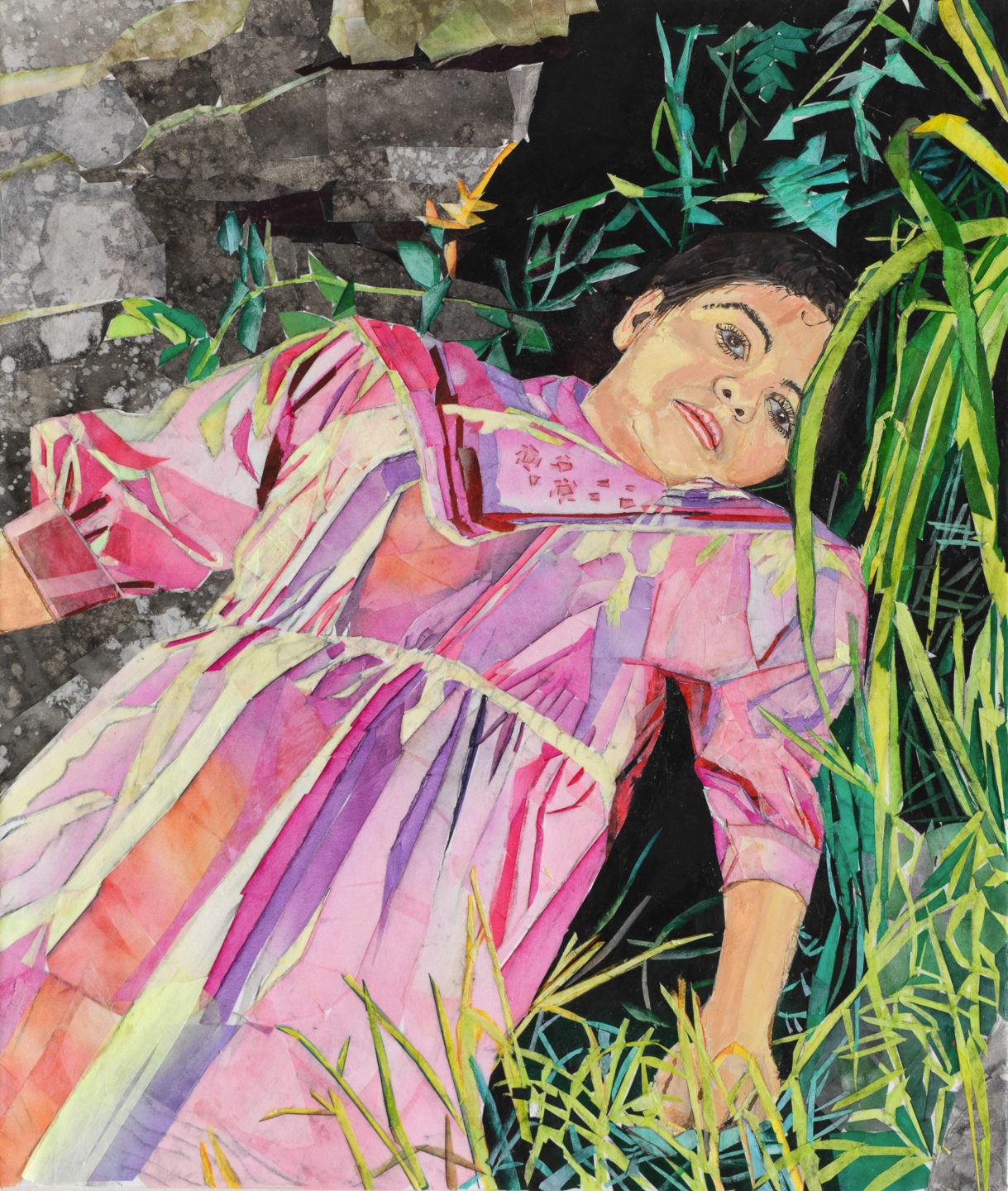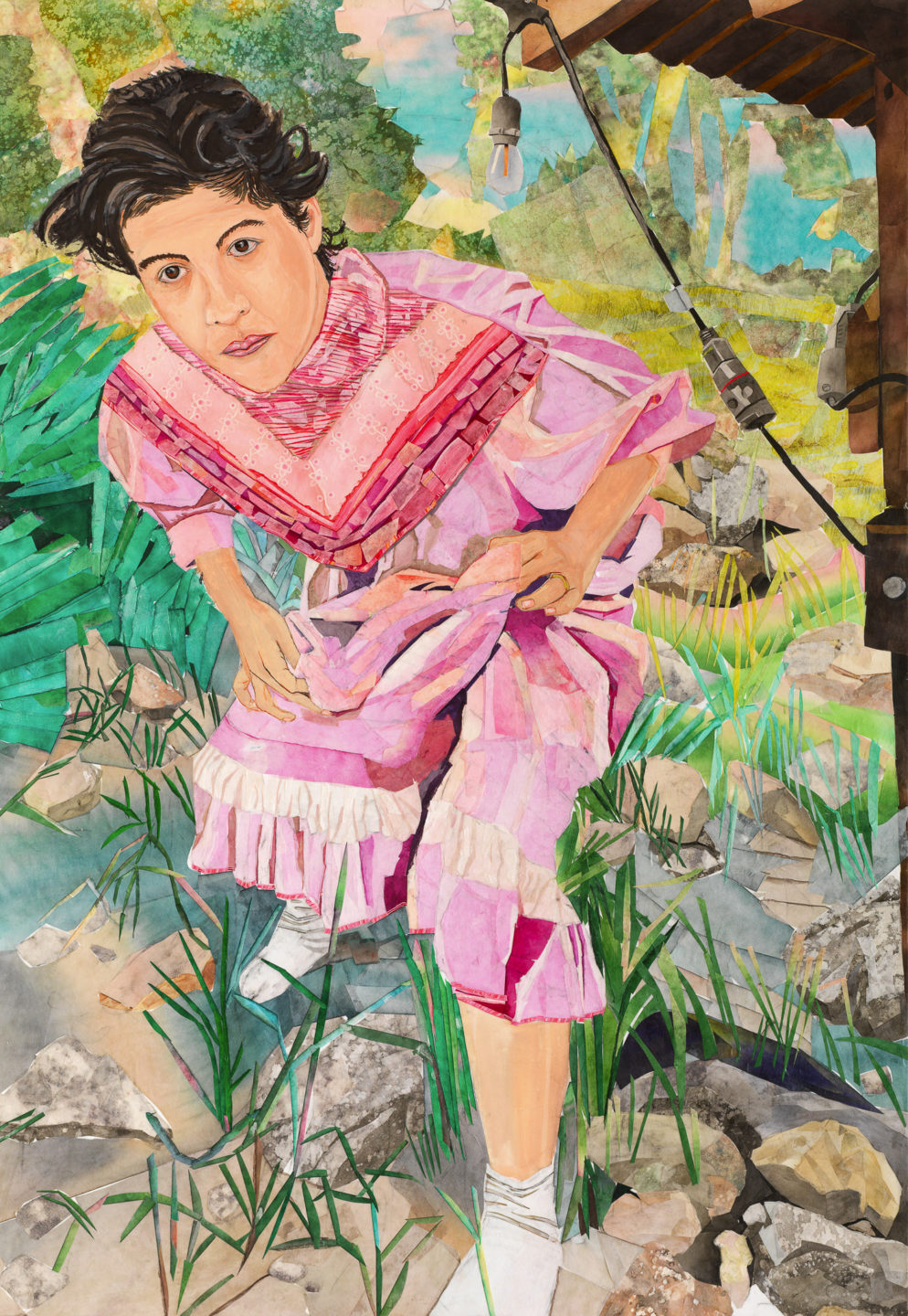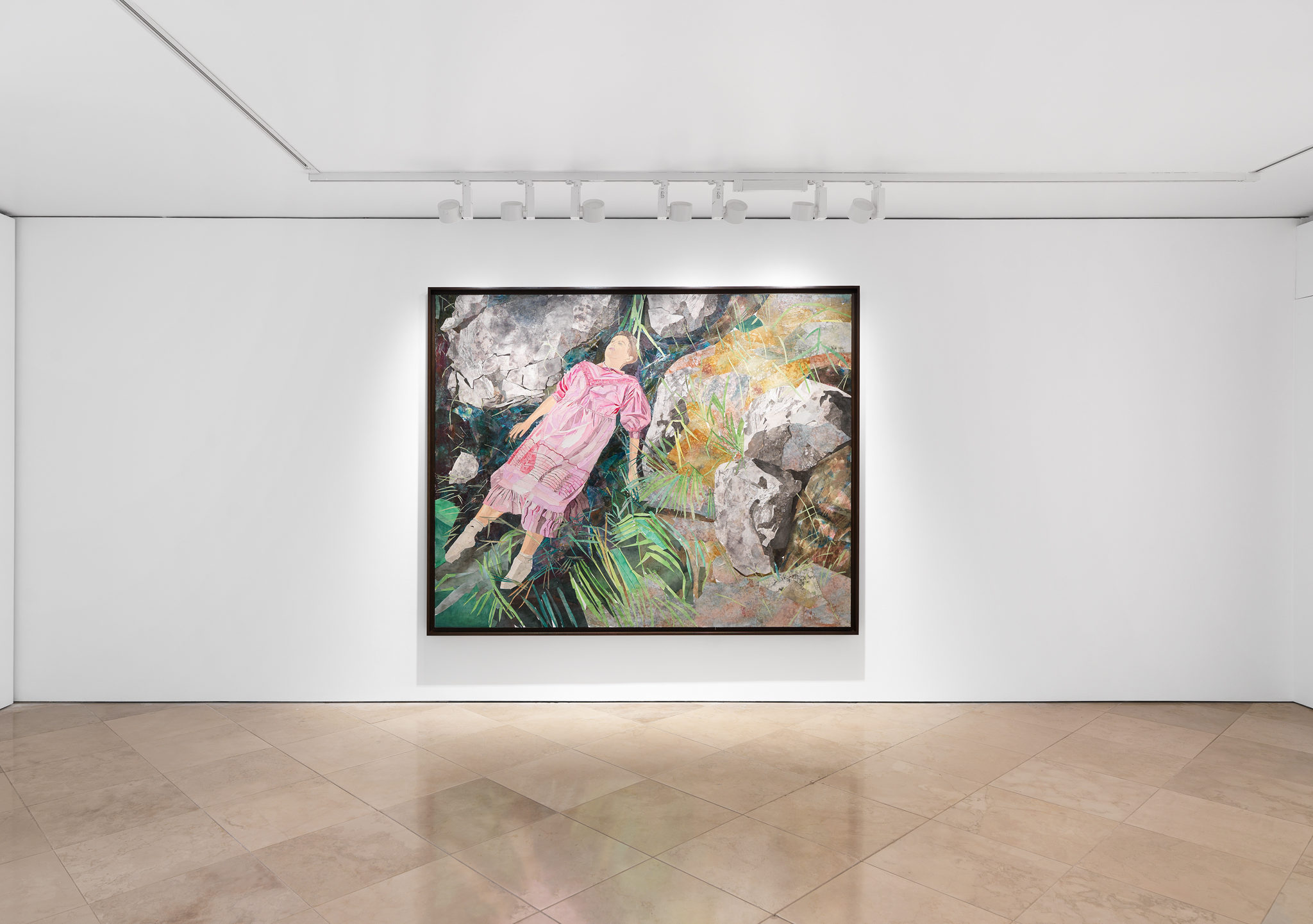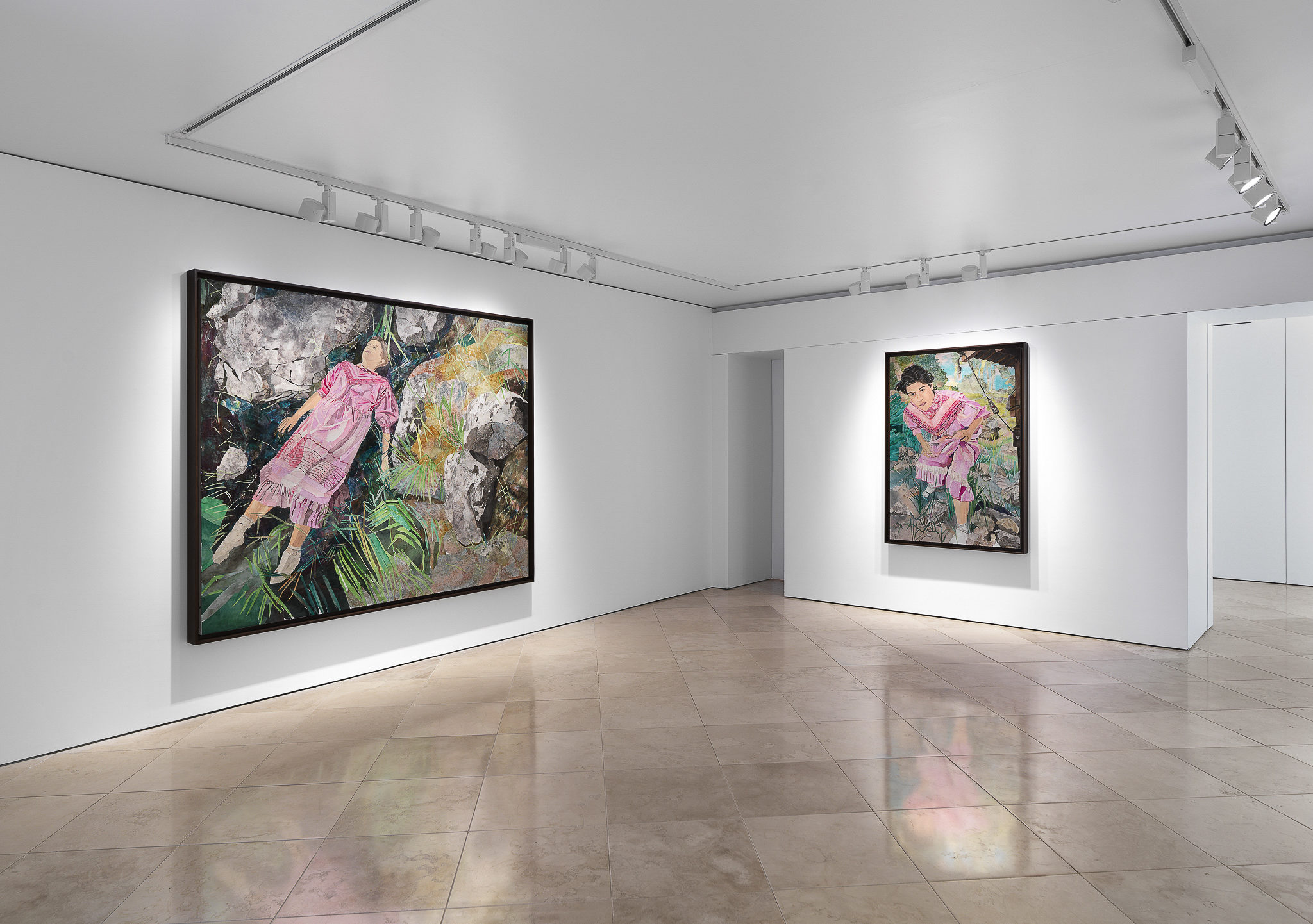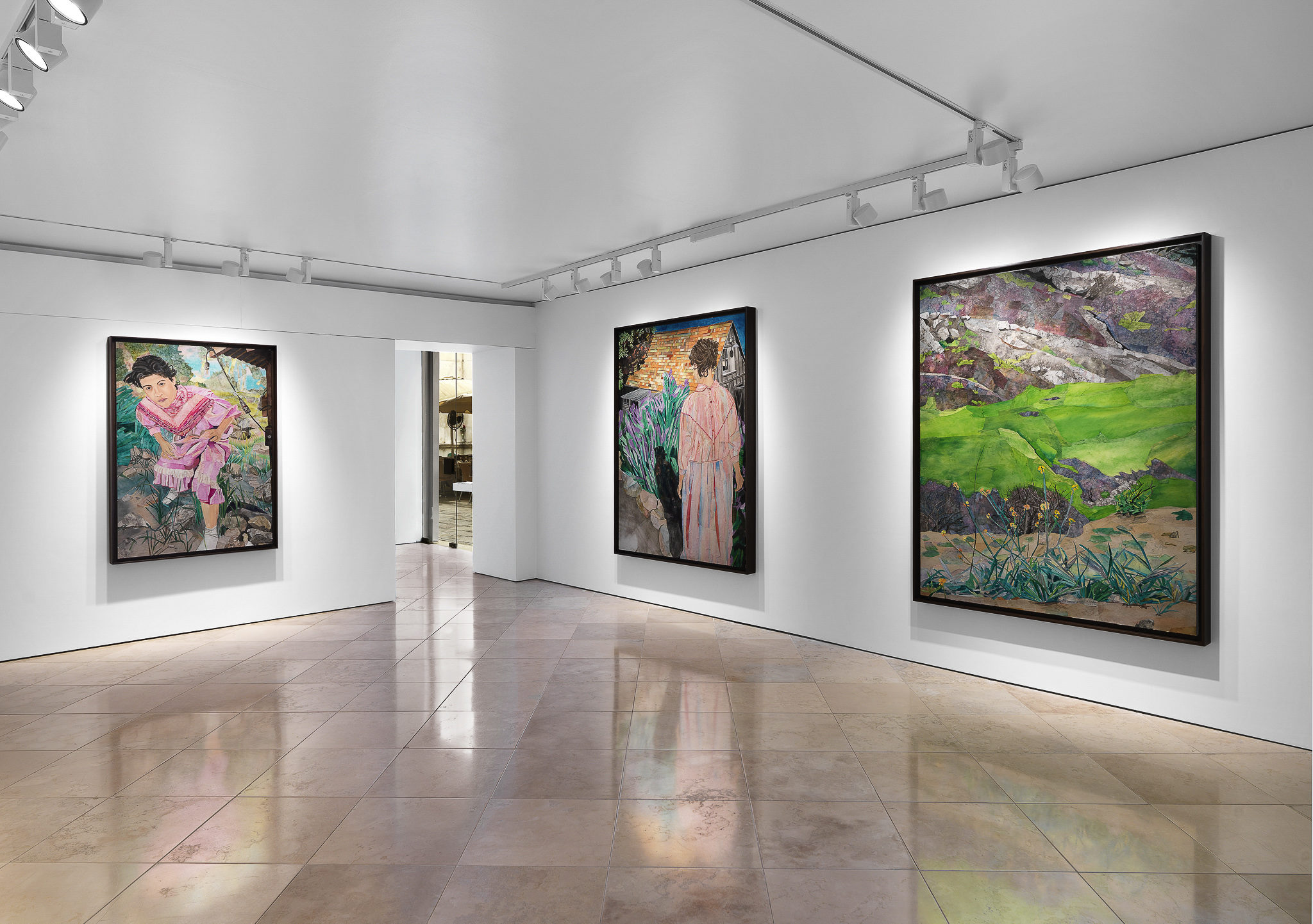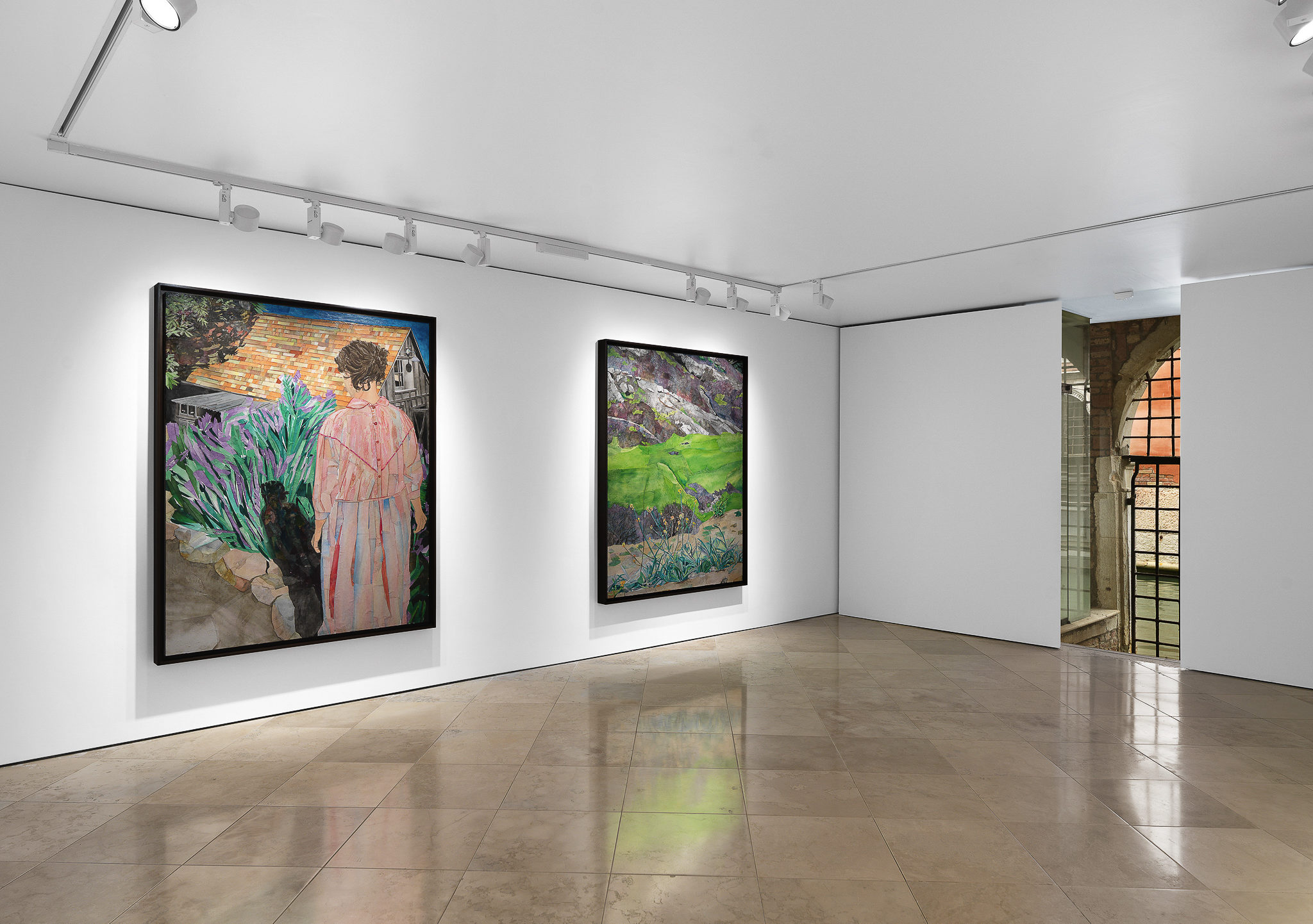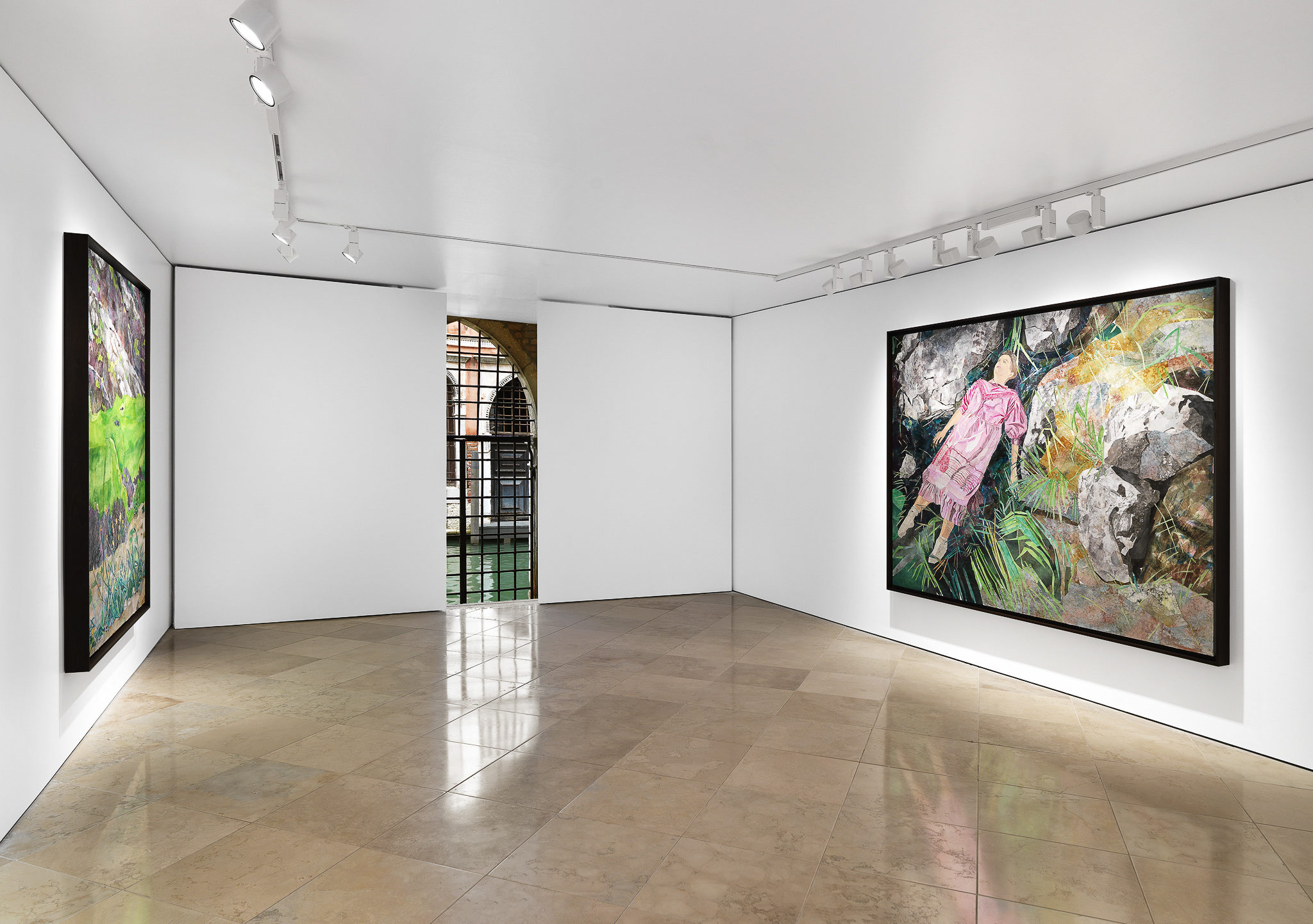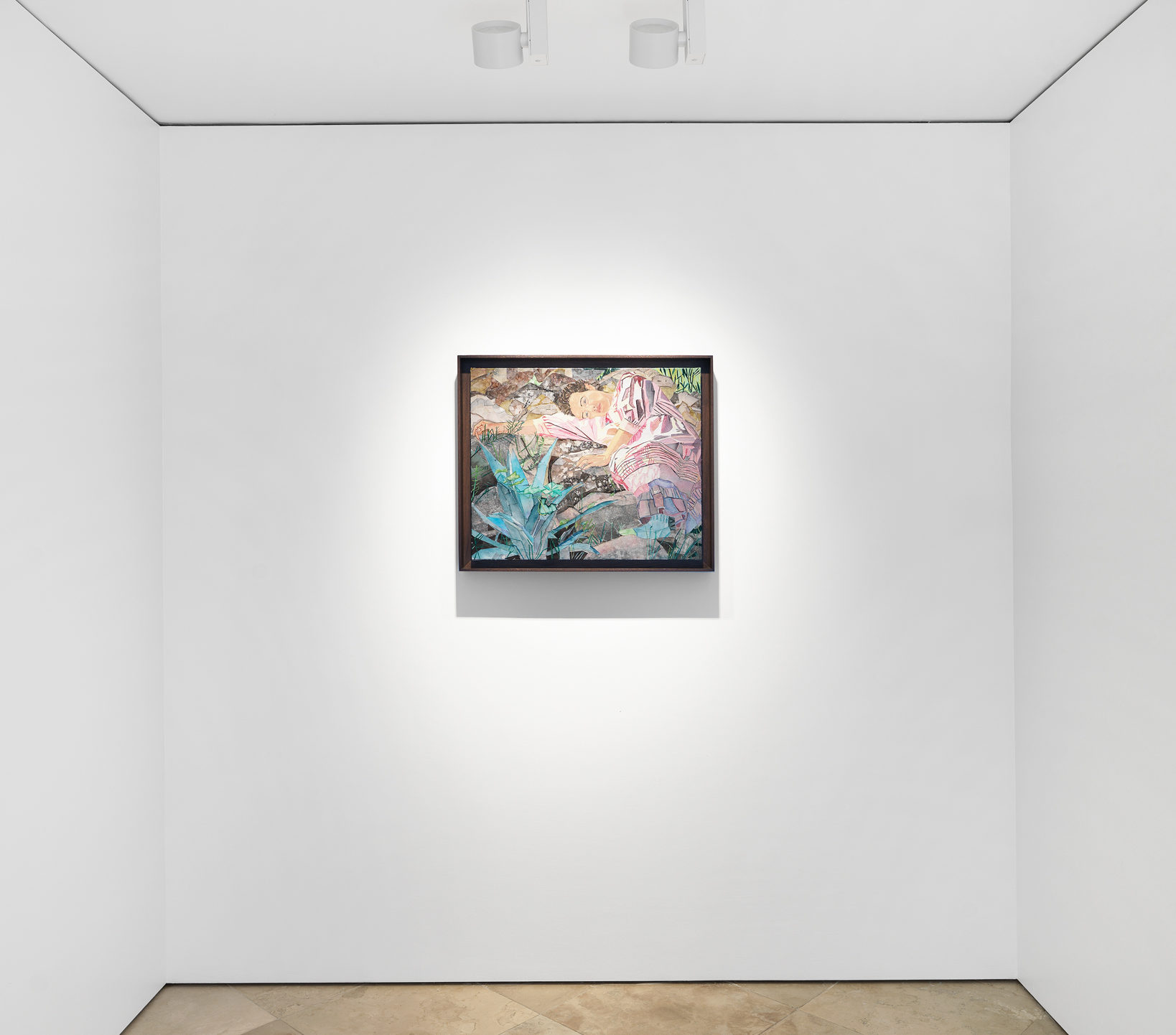María Berrío: The Land of the Sun
Victoria Miro Venice
Exhibition 17 September–29 October 2022
Tuesday–Saturday: 10am-1pm & 2-6pm
Monday by appointment
‘She found herself in the land of the sun, where the world was shaped like a woman’s belly and she was the only soul within…’ — María Berrío
Victoria Miro is delighted to present an exhibition in Venice by Brooklyn-based artist María Berrío.
Celebrated for works that draw on aspects of mythology and folklore to create urgent contemporary narratives, María Berrío has often focused on agency and survival, particularly that of women and children in the face of overwhelming ecological, economic or geo-political forces. In The Land of the Sun, created especially for her exhibition in Venice, Berrío conjures an apocalyptic scenario, against which the efforts of her central character, in search of water, refuge, or simply the familiar aspects of her former life, become Sisyphean as she journeys through a world of heat and dust on the brink of extinction.
The following texts have been written by the artist about this compelling new body of work.
The Land of the Sun
‘When the world ended, the woman fled the fallen cities in search of refuge. On her journey she never came across anyone. It had been a long time since she had seen another living person.
She walked great, silent distances. She walked through a valley, choked with the skeletons of burned trees, but where a verdant green had already grown among the cinders.
She found herself in the land of the sun, where the world was shaped like a woman’s belly and she was the only soul within.
Here she found rest and safety and the horrors that that engendered. For here the silence was absolute, the solitude eternal. Survival was a brutality. Her mind began to rip beneath the sun. She would bathe in its fluorescent light, playing with it, and as the light wrapped between her fingers, her nails and skin began to melt. The dead would make appearances in the lily of the field and the bird of the air, while the timelines of past and future ceased to have meaning.
Sometimes she would go down to the water. In her the river sang, at least in bygone days. She would lie back in the water staring up at the sun, amazed she could still float with a heart full of broken stones. Once while swimming she bumped into a half-submerged stone, not in her heart but in the water, and it scraped both her knees. At that moment she had a thought: perhaps her route away from the land of the sun was blockaded by the rocks that littered the water. They were not mere slabs but the crenelated parapets of fortified walls. An obstacle in the path to her escape. But one that could be surmounted. She began working right away.
She dug out the rocks from the sandy floor. Sometimes they would make a sucking sound, like a tooth extracted from a sleeping giant. She would carry them up the hills away from the water. Often she would collapse at the top of the hill from exhaustion, only to watch a rock tumble back down the hill and make a resounding splash. With time she would pick herself up and retrace her steps.
Up and down these boulders went. She would laugh and curse at the sun just to hear laughing and cursing, knowing full well that both would soon be extinguished. It was the inevitable that she was facing. Whether the geometries were open or closed, whether the world ended with a bang or a whimper, it ended all the same.’
María Berrío 1
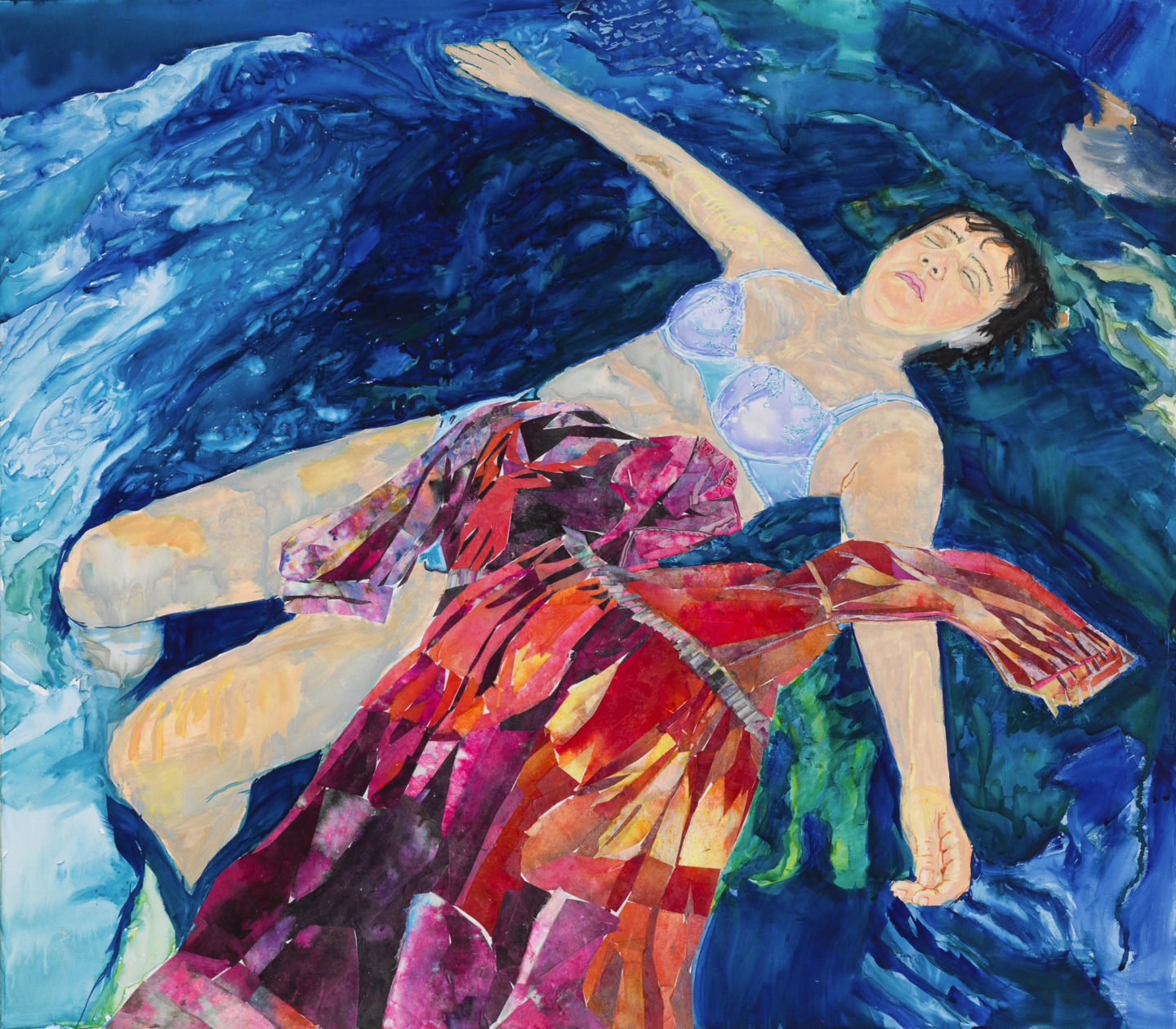
Collage with Japanese papers and watercolour paint on linen
71.1 x 81.3 cm
28 x 32 1/8 in
María Berrío, The Collapsed Tower, 2022
More info‘She would often think of it when she went to the water to swim, where she would find reprieve from the relentlessness of the sun…’ — María Berrío
María Berrío 1a

Collage with Japanese papers and watercolour paint on linen
53.3 x 63.5 cm
21 x 25 in
María Berrío, Open Geometry, 2022
More info‘When all civilisations ceased to be, and their majestic heights and deeds became ash and rubble, the woman was left to ponder it. She would often think of it when she went to the water to swim, where she would find reprieve from the relentlessness of the sun and her encroaching madness. It was here that she had a revelation. She realised that right below her floating form, the hard rocks were not mere rocks, but a fortification keeping her from fleeing this land. The rocks were the walls of a prison. But they were moveable walls.’
María Berrío 2
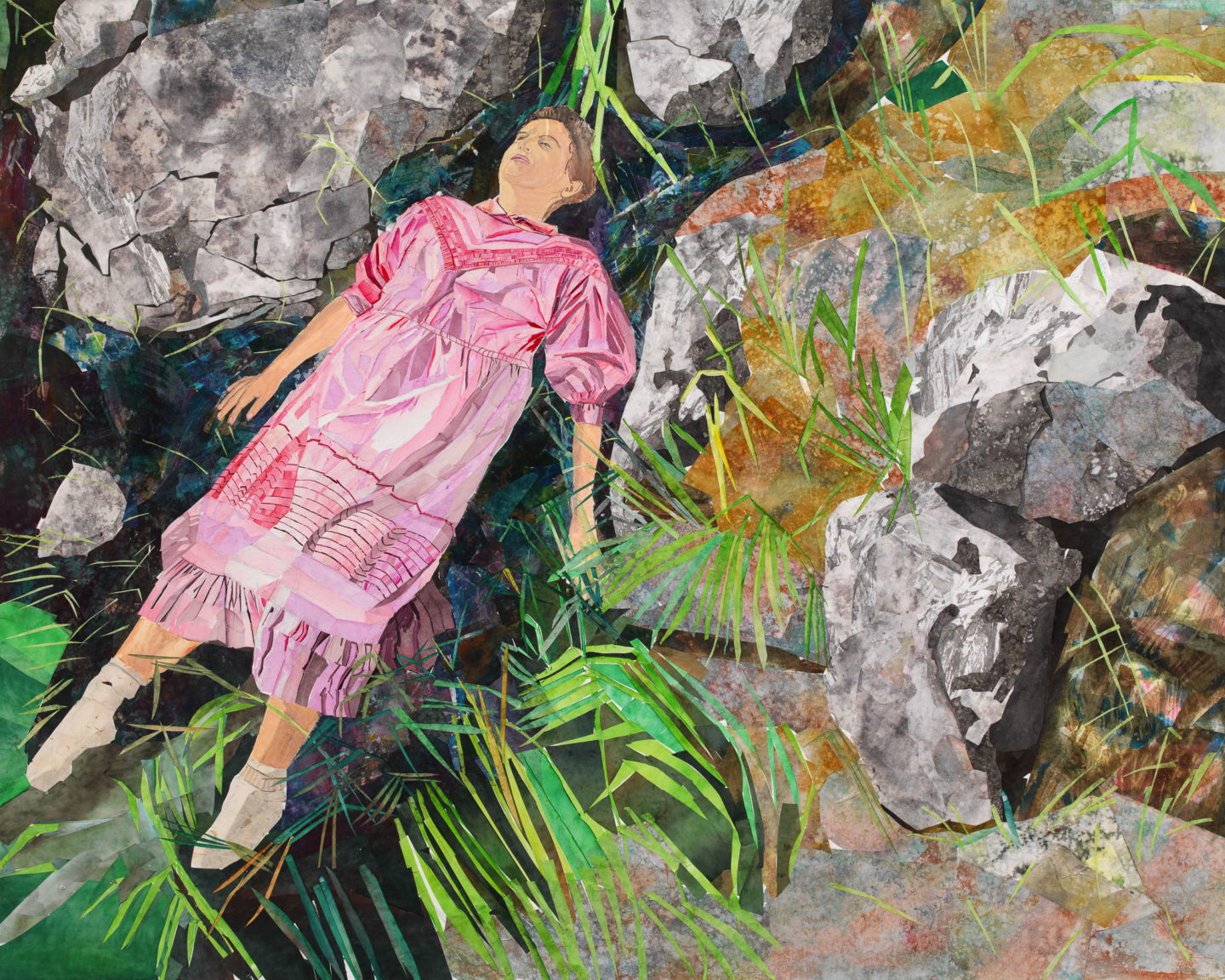
Collage with Japanese papers and watercolour paint on linen
182.9 x 228.6 cm
72 1/8 x 90 in
María Berrío, Closed Geometry, 2022
More info‘As the woman bakes beneath the sun, her visions, her memories, her grief and joys and hallucinations all become indistinguishable…’ — María Berrío
María Berrío 3
‘She stands before this shelter, perhaps with an inkling that she has come upon an event horizon, a black hole’s boundary beyond which she will be unable to escape.’ — María Berrío
‘The woman’s flight from the ruined cities leads her through various terrain, much of it scorched and lifeless. Yet along her journey she happens upon a valley where the blackened skeletons of burnt trees emerge from a lush green, a verdant carpet nourished by the embers of what once was. It was here that humankind was brought together and the decisions of the Last Judgment were made. The woman, left out of those deliberations, continues on.’
‘The woman comes upon a vacant home after much wandering in the land of the sun. It is a refuge and a place of safety, though it is also the place where the woman will fold in upon herself in utter solitude. She stands before this shelter, perhaps with an inkling that she has come upon an event horizon, a black hole’s boundary beyond which she will be unable to escape.’
María Berrío 4
‘Often she would collapse at the top of the hill from exhaustion, only to watch a rock tumble back down the hill and make a resounding splash. With time she would pick herself up and retrace her steps’ — María Berrío
‘The woman had an epiphany that the stones nestled at the bottom of the water were a blockade preventing her escape. And so she began to remove those stones, yanking them from the sandy bottom and dragging them away up the hill. Often she would collapse at the top of the hill from exhaustion, only to watch a rock tumble back down the hill and make a resounding splash. With time she would pick herself up and retrace her steps.’
María Berrío 5
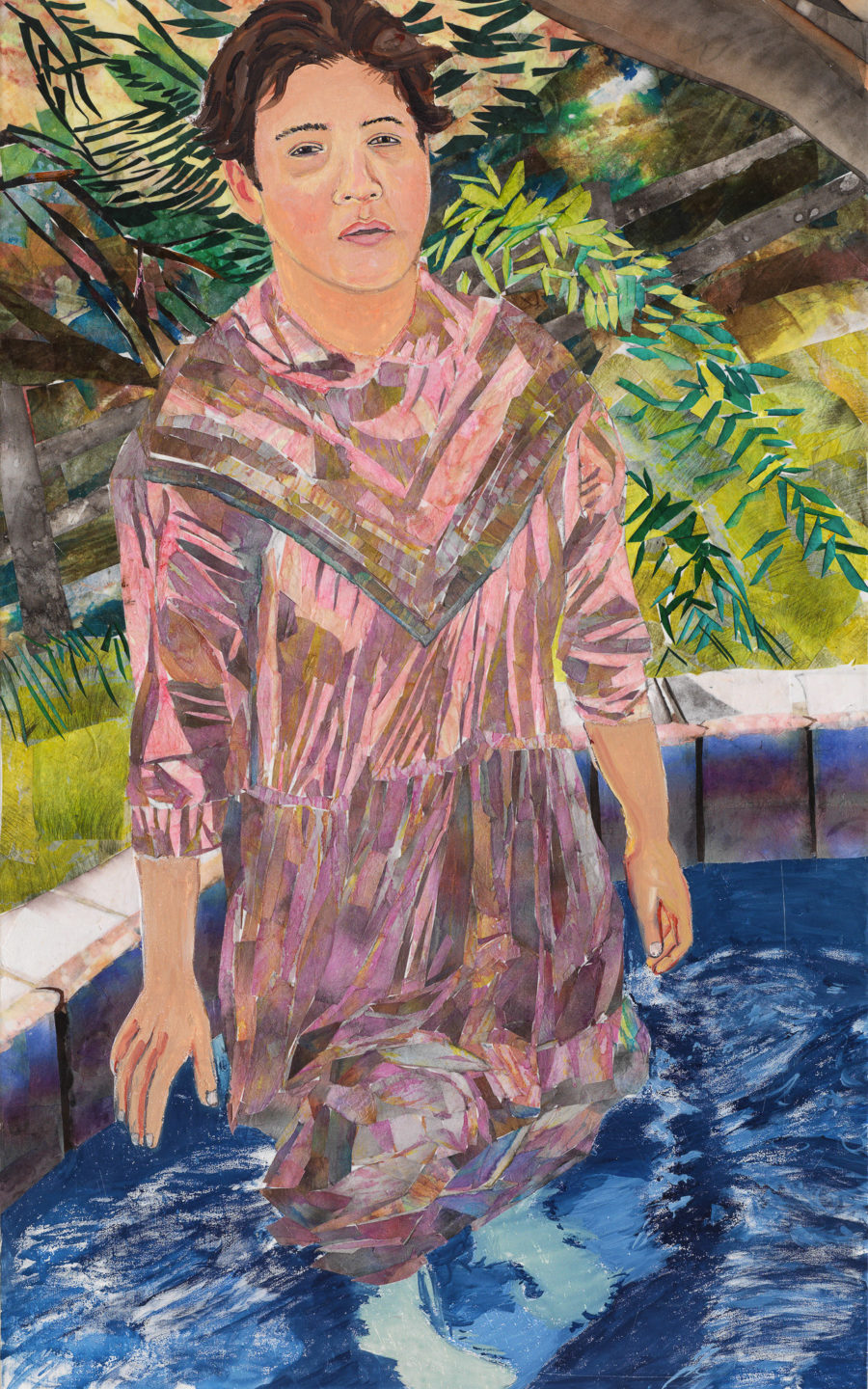
Collage with Japanese papers and watercolour paint on linen
61 x 97.2 cm
24 x 38 1/4 in
María Berrío, Prayers for Broken Things, 2022
More info‘All the gods seem to have crumbled along with their altars, and the world is a fractured place. Fair enough: she offers broken prayers for broken things.’ — María Berrío
‘The woman extracts the stones from the water, hoping that they are mere obstacles in her escape route from the Land of the Sun. It is here, exhausted from her physical exertions and yet revived by the cool wetness, that she will sometimes pause to mutter a prayer. She is often unsure what the prayer is for, or to whom. All the gods seem to have crumbled along with their altars, and the world is a fractured place. Fair enough: she offers broken prayers for broken things.’
About the artist
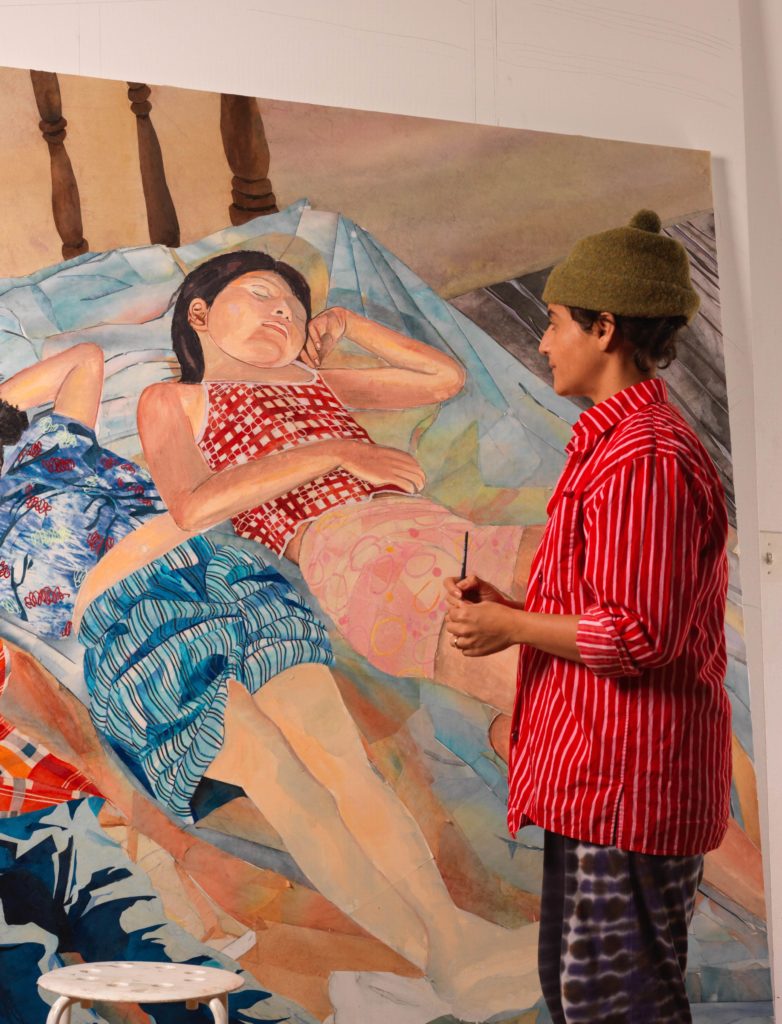
María Berrío was born in Bogotá, Colombia in 1982, completed her BFA at Parsons School of Design in 2004, and her MFA at the New York School of Visual Arts.
The artist’s first survey show María Berrío: Esperando mientras la noche florece (Waiting for the Night to Bloom) was on view at The Norton Museum of Art in West Palm Beach from January until May 2021. Her work currently features in Women Painting Women, a thematic exhibition featuring 46 female artists who choose women as subject matter in their works, on view at The Modern, Fort Worth, until 25 September 2022. Also this year, The Institute of Contemporary Art, Miami is displaying recent acquisitions for the first time, including Berrío’s 2020 sculpture The Petition, until 30 October 2022. Additionally, the artist’s work will be included in two major group exhibitions, A Natural Turn, opening at The DePaul Art Museum in Chicago in September 2022, and Spirit in the Land on view at the Nasher Museum of Art at Duke University in 2023. A solo exhibition of new and existing works will take place at ICA Boston, 16 February–6 August 2023.
Recent institutional group exhibitions include Born in Flames: Feminist Futures, Bronx Museum of the Arts, New York, USA (2021); Labor: Motherhood & Art in 2020, University Art Museum at New Mexico State University, Las Cruces, NM, USA (2020); Present Tense: Recent Gifts of Contemporary Art, Philadelphia Museum of Art, Philadelphia, USA (2019); People Get Ready at Nasher Museum of Art, Durham, NC (2018), Prospect.4 Triennial, New Orleans (2017–2018), Art on Paper Biennial, Weatherspoon Museum, Greensboro, NC (2017), CUT N MIX, El Museo del Barrio, New York, NY (2015).
Berrío’s work is in permanent collections including the Whitney Museum of American Art, New York, USA; Dallas Museum of Art, USA; LACMA, Los Angeles County Museum of Art, USA; Museum Of Contemporary Art Chicago, USA; National Gallery of Art, Washington DC; Crystal Bridges Museum of American Art, USA; Nasher Museum of Art at Duke University, USA; Pérez Art Museum, Miami, USA and Pennsylvania Academy of the Fine Arts, Philadelphia, USA, among others.
